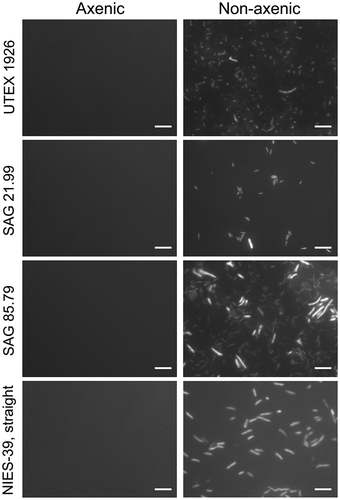Figures & data
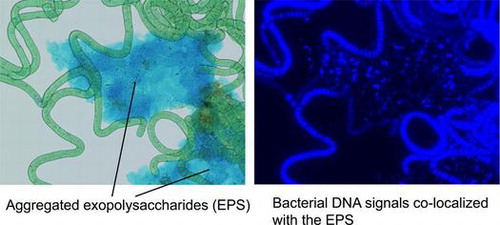
Fig. 1. Contaminating bacteria in subfractions of non-axenic cultures.
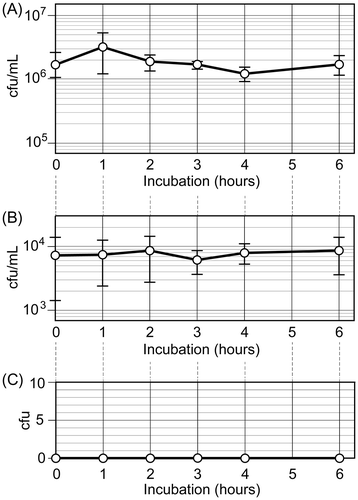
Fig. 2. Alcian blue staining for the preparations of Arthrospira trichomes.
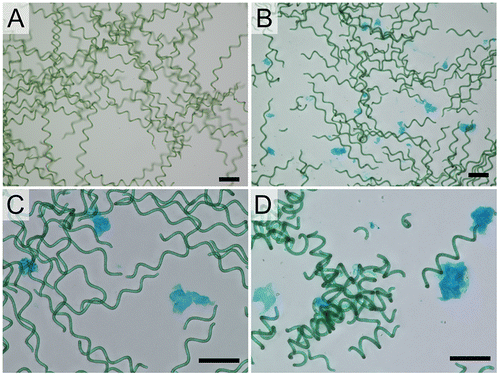
Fig. 3. Association of bacteria with aggregates of EPS in non-axenic cultures.
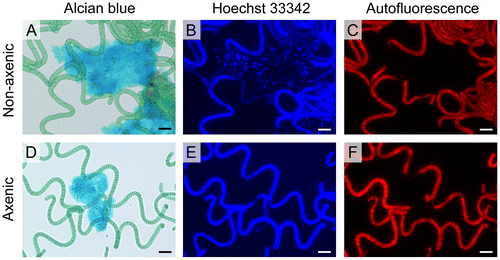
Table 1. Isolation of axenic trichomes of various Arthrospira strains.
Fig. 4. Heterotrophic bacteria in the cultures prepared in this study and in original non-axenic cultures.
